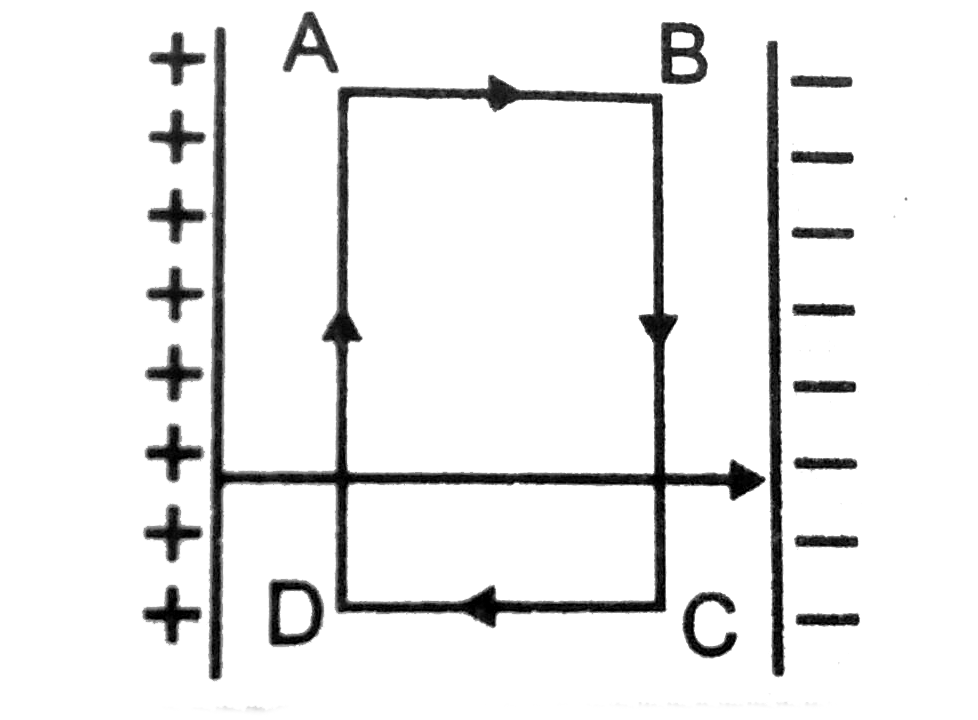A proton accelarted by a potential differnce V gets into the unifrom electric field of a paralallel-plate capacitor whose plates extended over a length l in the motion direction. The field strenth varies with time as E=at, where a is a constant. Assuming the proton to be non-relatistic, find the angle between the motion directions of the proton before and after its fight throgh the capacitor, the proton gets in the field at the moment t=0. The edge effects are to be neglected.
The electric filed inside the capacitor vaires with time as,
E=at
Hence, electric force on the proton,
F=eat
and subsequentely, acceleration of the proton,
w=eatm
Now, if is the time elapsed during the motion of the proton between the plates, then t=lv∣∣, as no acceleration is effective in this direction, (Here v∣∣ is velocity along the though of the plate.)
From kinematics, dv⊥dt=w
so, ∫v⊥0dv⊥=∫t0wdt,
(as initally, the component of velocity in the direction, ⊥ to plates, was zero.)
or, ,v⊥=∫t0eamt22m=ea2ml2v2∣∣
Now, tanα=v⊥v∣∣=eωl22mv3∣∣
=eal22m(2eVm)32 as v∣∣=(2eVm)12, from energy conservation.
=al24√m2eV3
Topper's Solved these Questions
- ELECTRODYNAMICSBOOK - IE IRODOV, LA SENA & SS KROTOVCHAPTER - ELECTRODYNAMICSEXERCISE - Electromagnetic Induction
84 Videos
- ELECTRICITY AND MAGNETISMBOOK - IE IRODOV, LA SENA & SS KROTOVCHAPTER - ELECTRICITY AND MAGNETISMEXERCISE - All Questions
6 Videos
- ELECTROMAGNETISMBOOK - IE IRODOV, LA SENA & SS KROTOVCHAPTER - ELECTROMAGNETISMEXERCISE - All Questions
24 Videos
Similar Questions
A proton of mass m and accelerated by a potential difference Vgets into a uniform electric field of a parallel plate capacitor parallel to plates of length 1 at mid-point of its separation between plates. The field strength in it varies with time as E = at, where a is a positive constant. Find the angle of deviation of the proton as it comes out of the capacitor. (Assume that it does not collide with any of the plates.)
View SolutionAn electron accelerated by a potential difference V=3 volt first enters into a uniform electric field of a parallel plate capacitor whose plates extend over a length l=6cm in the direction of initial velocity. The electric field is normal to the direction of initial velocity and its strength varies with time as E=αt, where α=3600Vm−1s−1. Then the electron enters into a uniform magnetic field of induction B=π×10−9T. Direction of magnetic field is same as that of the electric field. Calculate pitch of helical path traced by the electron in the magnetic field. (Mass of electron, m=9×10−31kg)
View Solution
Knowledge Check
The electric field (→E) between two parallel plates of a capacitor will be uniform if.
Athe plate separation (d) is equal to area of the plate (A)Bthe plate separation (d) greater when compared to area of the plate (A)Cthe plate separation (d) is less when compared to area of the plate (A)D2 (or) 3Two plates are 2cm apart, a potential difference of 10 volt is applied between them, the electric field between the plates is
A20N/CB500N/CC5N/CD250N/CFor uniform electric field, potential difference between the plate is
A1ε0QAdB1ε0AdQCε0QAdD1ε0QdA
How will the electric field between the plates in parallel plate capacitor change, if the charge on the plates is doubled?
View SolutionA uniform electric field E axis between two charged plates as shown in Fig. What would be work done in moving a charge q along the closed recetangualr path ABCDA ?

View Solution" The energy density stored in the electric field of field strength E between two plates of capacitor is "
View SolutionInside a parallel plate capacitor the electric field E varies with times as t2. The variation of inducted magnetic field with times is given by
View SolutionIf the gap between the plates of a parallel plate capacitor is filled with medium of dielectric constant k=2 , then the field between them
View Solution
